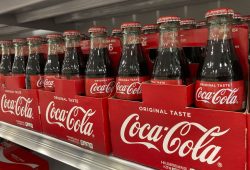In the dynamic world of the retail industry, the terms On Trade and Off Trade are used to describe different channels of product sales and consumption. These two point-of-sale (POS) executions present significant differences in terms of buying behavior, types of establishments, personnel, and marketing strategies. Let’s delve into these differences in detail to better understand each channel and its impact on product commercialization.
Differences Between On Trade and Off Trade Channels
The primary distinction between the On Trade and Off Trade channels lies in the buying and consumption behavior. The On Trade channel allows customers to purchase and consume the product at the same place of sale, such as bars, restaurants, hotels, and similar establishments like cafés. Hence, this execution is also referred to as HoReCa (Hotels, Restaurants, and Cafés). On the other hand, the Off Trade channel refers to places where customers buy products to consume elsewhere, such as supermarkets, convenience stores, and other retailers.
Types of Establishments
Different types of establishments are another key distinguishing aspect. The On Trade channel is primarily found in places where customers can enjoy an in-situ experience, whether socializing with friends at a bar or having a meal at a restaurant. These establishments provide a suitable ambiance for consumers to relax and enjoy the purchased product. On the other hand, the Off Trade channel focuses on places where customers buy products for consumption at a later time or place, such as supermarkets, grocery stores, or convenience stores.
Personnel in Each Channel
The reliance on personnel within each channel is another relevant distinction. In the On Trade channel, companies have direct control over the staff serving customers at the establishments. This makes the relationships between the company or brand and the On Trade channel crucial in ensuring a satisfactory experience. On the other hand, in the Off Trade channel, classic trade marketing activities are required to promote and sell products through intermediaries, such as agreements with retailers and promotional activities in stores.
Marketing Strategies in Each Channel
Marketing strategies also vary between the two channels. In the On Trade channel, strategies such as tastings, themed promotions, events, and collaborations with establishments can be employed to create a unique experience for customers. In contrast, marketing strategies in the Off Trade channel may focus on discounts, point-of-sale promotions, mass media advertising, and actions that drive product choice within the context of a supermarket or other types of stores.
Which Types of Products Sell More in the On Trade and Off Trade Channels?
The types of products that sell more in the On Trade and Off Trade channels can vary depending on the buying and consumption behavior of the product. Here are some examples of the types of products typically sold more in each channel:
On Trade Channel
Alcoholic beverages: The On Trade channel, which includes bars, restaurants, cafés, and hotels, is known for being a place where alcoholic beverages such as beer, wine, spirits, cocktails, and others are consumed.
Prepared food: In the On Trade channel, customers often consume prepared food at the same place where they purchase it, such as dishes in restaurants or tapas in bars.
Coffee and tea: Establishments within the On Trade channel, such as cafés, also typically sell coffee and tea for on-site consumption.
Off Trade Channel
Packaged food: In the Off Trade channel, which includes supermarkets and convenience stores, a wide variety of packaged food products such as pantry items, snacks, and non-alcoholic beverages are sold.
Personal care products: In the Off Trade channel, personal care products like cosmetics and hygiene items can also be found.
Home goods: This channel offers products for the home, such as cleaning products and kitchen utensils.
It is important to note that these examples are merely indicative, and the sale of products may vary depending on geographic location, consumer preferences, and other factors. Additionally, some products may be sold in both the On Trade and Off Trade channels, depending on circumstances and the marketing strategies of each company or brand.
Understanding these differences and adapting strategies accordingly is essential for maximizing the impact and effectiveness of marketing actions. With a clear vision of the peculiarities of each channel, companies can more precisely target their audience and optimize their market presence.












